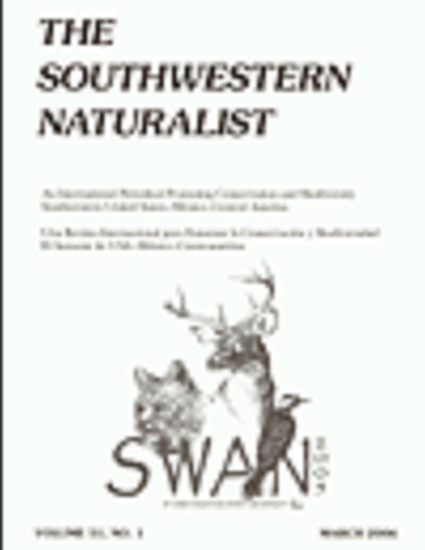
Article
Natural Revegetation of an Unreclaimed Lignite Surface Mine in East-Central Texas
The Southwestern Naturalist
(1990)
Abstract
Evaluating plants and soils on unreclaimed surface mines helps land managers understand the effects of minesoil properties on plant growth and community development and may aid in the development of current reclamation plans. Eight unreclaimed surface mined sites in east-central Texas, ranging in age from 3 months to 50 years, were sampled to evaluate vegetation and minesoil changes over time and for comparison to an adjacent unmined area. Three- and 6-month-old unreclaimed areas had about 1% plant cover composed of pioneer grass and forb genera, including Dichanthelium, Aster, Chenopodium, and Polygonum. Herbaceous plant cover increased from 12% on the 5-year-old site to a peak of 25% on the 20-year-old site. Dominant genera on 10- to 20-year-old sites were Andropogon, Bothriochloa, Cynodon, Dichanthelium, Paspalum, Aster, and Rumex. Woody species established as early as 5 years after mining (predominantly Baccharis salicina T. et G.), and canopy cover reached 14 and 35% on the 20- and 30-year-old sites, respectively.
Disciplines
Publication Date
1990
DOI
DOI: 10.2307/3672042
Citation Information
Christopher A. Call. "Natural Revegetation of an Unreclaimed Lignite Surface Mine in East-Central Texas" The Southwestern Naturalist Vol. 35 Iss. 4 (1990) p. 434 - 440 Available at: http://works.bepress.com/christopher_call/64/
